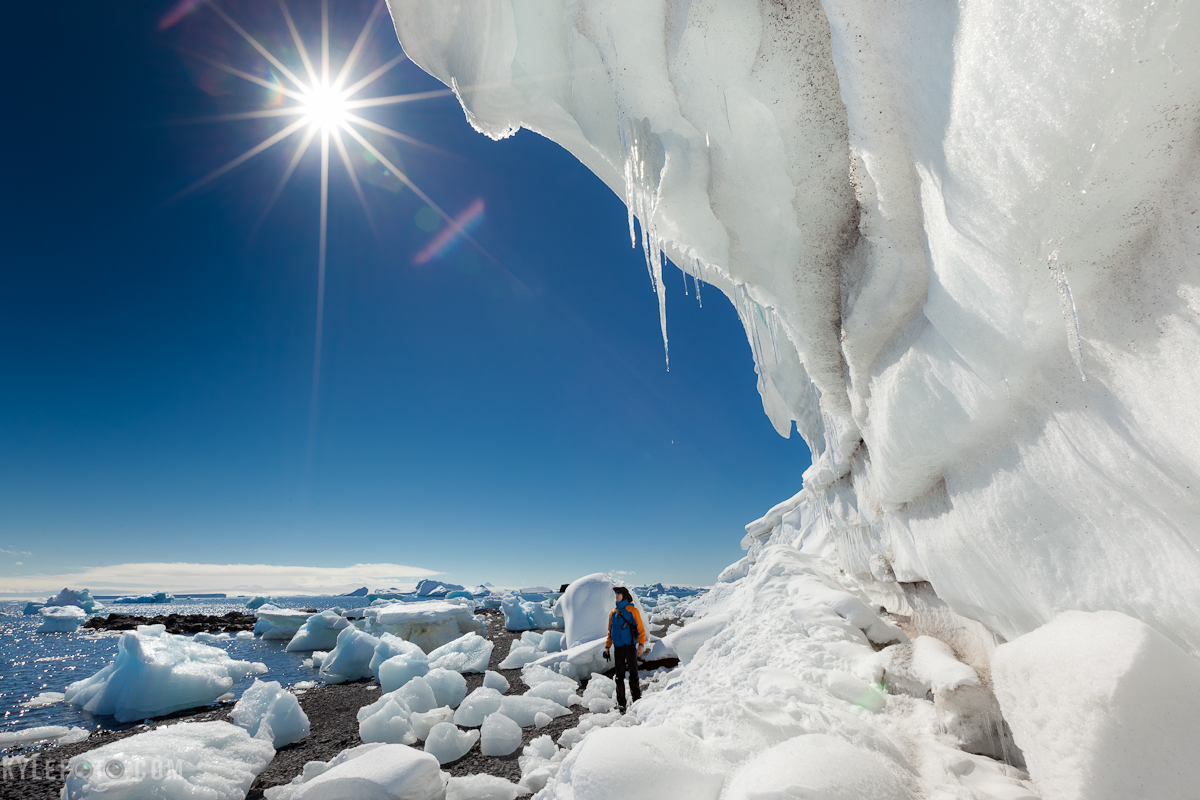his morning we had an awesome time in Godshul. I love how things change sosuddenly. When we were leaving the ship it was cold and windy, not so
unusual. Passengers freeze on the way to the landing site, but moments afte=
r
landing, the clouds part, the sun shines and suddenly it is hot. The air wa=
s
completely still and the tusset grass seems to contain all the heat, it fel=
t
like 20 degrees.=20
We had to make our way through the tusset grass, big mounds of tufty grass,
that create a landscape that was likely inspiration for Dr. Suess, each
mound lush enough you could easily hide thousands of people amongst an
entire field of them. The entire place was also riddled with fur seals, so
as staff we had to be vigilant and spread ourselves across the path so
travelers don=B9t get lost or surprised by a seal hidden in the paths between
the tusset. After the last few people walked past me, I thought I would jus=
t
sit, watch and film the Elephant seals in front of me. I heard them burp,
fart and wallow in a big steaming pile in front of me, occasionally glancin=
g
at me with their big black eyes. Hadleigh and I chatted about them and
random things, and eventually in the hot sun, I fell asleep. I can=B9t help
but feel a connection with the Elephant seals given we were both sharing th=
e
warmth and soft tusset grass.
Grytviken was particularly interesting this time around. We did the usual
thing, we gave a toast to =B3The Boss=B2 at Shackleton=B9s grave, and I headed
down to the whaling station to take a look around the site. I was somewhat
sad to see a lot more things missing. In an effort to make the area more
tourist friendly, most of the buildings there have been removed and barrier=
s
and railings have been erected around some of the interesting machinery. Th=
e
last two years I was there, none of those changes were there, it was messie=
r
and I could walk in and among some of the coolest places. I realize now I
have photos of the place that nobody else can get any more, the place is
quite different from what it used to be. I will have to look through my old
library and see what shots are particularly unique.
The whole town front is littered with little baby Elephant seals we call
=B3weeners=B2 as they are getting weened off mother=B9s milk, also quite
appropriate to say given their wiener like shape.
I ended up hanging with them at the landing site for hours, watching them
sneeze and slumber, some snuggling up in curiosity. It was incredibly
curious watching them from so close, these animals can hold their breath fo=
r
up to two hours, important because they are deep sea divers, living
submarines. So if you can hold your breath for two hours, why bother
breathing? I would watch their nostrils open and close, and then close for
at least 10 minutes at a time, it was so funny to watch all these little
baby seals hold their breath on the beach, eyes closed and fast asleep. You
could still tell they were alive, they would occasionally itch themselves,
but it appears that their heartbeat would cause them to constantly jiggle
now matter how still they are, really cute!
Another thing happened that really excited me, an enormous swarm of krill
came into the bay!
Krill is one of the most important things in the Antarctic. Without them,
there would be very little mammalian life down here, almost everything
depends on them for food. If you were to take all the Krill in Antarctica
and weigh it, the combined mass of the Krill would be far greater than any
other species on earth, even humans...for now.
But even in their greatness, this is the first time I=B9ve been able to see s=
o
many of them!
I simply had to photograph them, scooping a cocktail glass into the water I
got at least 20 of them, all squirting around the glass curiously. I set th=
e
glass on the table and used my bed blanket to make a blue background behind
the glass. It=B9s not easy shooting them with a macro lens when they have as
much freedom as my lime does in a gin and tonic. But I got some interesting
ones so I can at least show people what these look like, half the size of m=
y
pinky at their biggest. I was madly shooting this while also participating
in a barbecue at the back deck of the ship. It was a bit surreal to be
photographing such an important animal accompanied by calypso music while
going to town on a hamburger outside of a Whaling station in view of =B3the
boss=B9s=B2 grave, -Shackleton does another roll.
Soon it was time to leave port and it=B9s completely dark outside, but
watching the ship leave the port the water was no longer blue, but pink and
lumpy, being comprised of 90% krill and 10% water, we all hung over the
railings in awe as the port faded away from us, a shame it was too dark to
photograph.

















